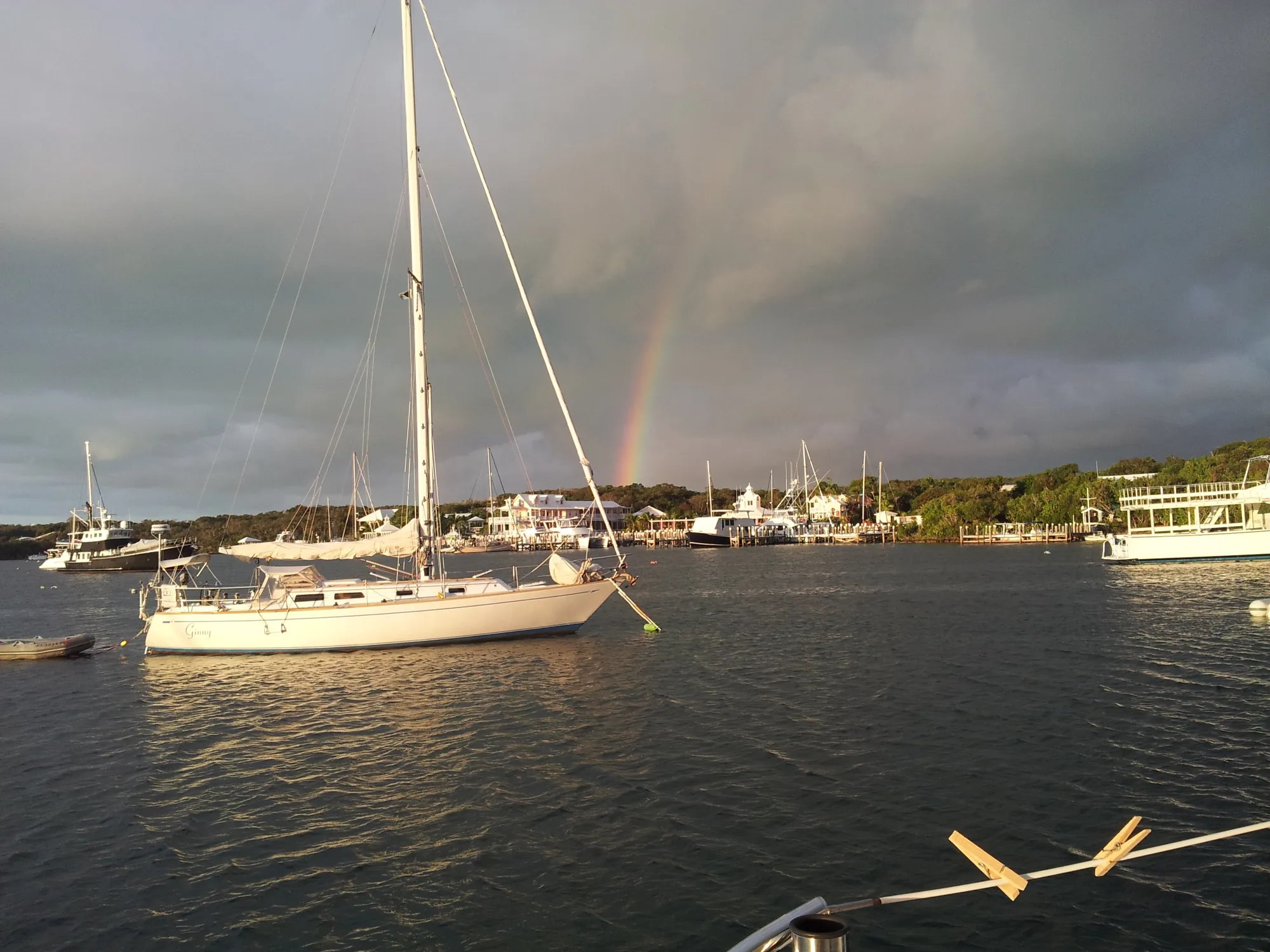How Will Summer Rains Affect My Trip In Biscayne National Park?

South Florida really just has 2 seasons. Tropical moisture, warm seas and calm winds predominate in the summer and can have quite an effect on boating in Biscayne. In the winter we are at the tail end of the temperate zone, bringing dryer and cooler air down from our Northern state’s while we still are being warmed by our proximity to the Gulfstream current. More on the winter weather in a future post, right now let’s “dive in” to what all that warm humid air means to you.
Summer is a great time to get in the water at the park! The water temperature is close to 80F and the seas are calm. BUT, all of the sudden there are big black clouds in the sky! While we don’t have mountains, a giant lightning topped Cumulonimbus cloud towering over the bay can be just as impressive and a little scary.
If you really don’t want to know the background and just want a quick answer on trip planning, odds will be in your favor if you book a morning trip or a sunset cruise, but if you want to know more, read on.
What does it mean when the weather app on my phone says there is a 60% chance of rain? How accurate are the app’s predictions? How do your Captains monitor the weather? To get those answers we have to look at what makes this area get almost 60 inches of rain a year, mostly in the summer months.
What makes it rain here in the summer? Warm moisture saturated air rises up in the atmosphere, as it gets higher and cooler the water that has been absorbed in the air precipitates out. That is a fancy way of saying the air is no longer strong enough to hold all that water it has absorbed and it starts raining.
With the sunrise and clear skies, both the land and the water start to heat up. Because the land temperature heats up quicker than the water and that hot air rises a sea breeze develops (wind from the sea to the shoreline). This brings all that moisture saturated air from over the ocean inland and heading up in the cooler upper layers of the atmosphere.
Boom! Our first thunderstorms start developing out over the Everglades midday when you are driving to the park for your snorkel. Meanwhile out in the Gulfstream on the edge of the reef it is sunny with calm seas, a great time to get in the water and explore.
Because our summer Gradient winds (winds over a big area) are light, those storms that start over the Everglades midday can track back over the bay later in the afternoon. They may even get out to the Gulfstream late in the day.
Florida is one of the few places in the world where a sea breeze develops over both sides of the state. This can cause steering currents for the storms to travel East or West. These currents are weak and affected by local conditions each day making predicting the movements of the storms very far in advance very difficult.
Sunrise over the Gulfstream, right off the East edge of Biscayne National Park. There may be some rain clouds over the Atlantic that formed overnight as the warm air over the water rose up. When we look to the West over land it is clear. Sometimes those storms do move over land in the morning and we have coastal showers that can last for 20-30 minutes over the park visitor center in the morning. Some days we delay the start of our trip to let these storms pass by.
Midday and into early afternoon is often clear in the waters of the park. As the day moves on the chance of those inland showers moving into the park increases, especially at the western edge of the park near the mainland. The good news is that while it is very hard to predict the movements of the storms very far in advance, by monitoring the radar and simply watching the sky, your captain can many times avoid them.
Sometimes we do get a free freshwater rinse! This can be more likely as we get to the end of the trip, the day and close to the mainland. We also can make a brief stop at one of three islands in the park that have shelters on land to wait the storm out, generally that can be about a 30 minute stop. There are also times when we just slow the boat down and huddle under our sun shade while it passes. Since the temperature is often in the upper 80’s and the rain is warm, it can be a little bit of an adventure, enjoying nature in all its glory.
What about Lightning? Here is a great article about lightning, lighting protection and boats.
“The chances of being hit by lightning are very low. There is really nothing you can do to dissuade Thor if he takes a liking to your masthead.”
That said, while it can be pretty exciting to be on a boat in the middle of a storm with all the banging and booming going on around you, we will do our best to keep you out of the eye of the storm. We do this by both monitoring the radar, talking with our other captains and in our powerboats, driving around the storms.
When forecasting the rain chances in the summer months both the weather service and private apps that use the weather services data can give an overall concept of how much rain the area will get, but (a very important but) they don’t know exactly where that rain will be at any given time. Looking at the current radar, monitoring a storm’s movement and strength may be able to help you guess what will happen in the next 10 minutes where you are but I am constantly surprised by how quickly things change locally.
Using future radar predictions on apps will give you an answer that is based on the overall percentage of rain but not an exact local forecast. Unfortunately we just do not have the technology to give us the kind of exact forecast that we all would like.
I have been boating in the summer in South Florida for the last 40 years and have seen my share of storms. From laying in my bunk on a hot summer night, feeling a cool breeze coming down the hatch only to recognize the impending storms approach to being 60’ under the water, SCUBA diving, watching the lighting flash harmlessly above, there have been some exciting moments. In the end it is all part of the beauty of nature, I hope you will join me in the summer for what may be a wet Biscayne experience!
